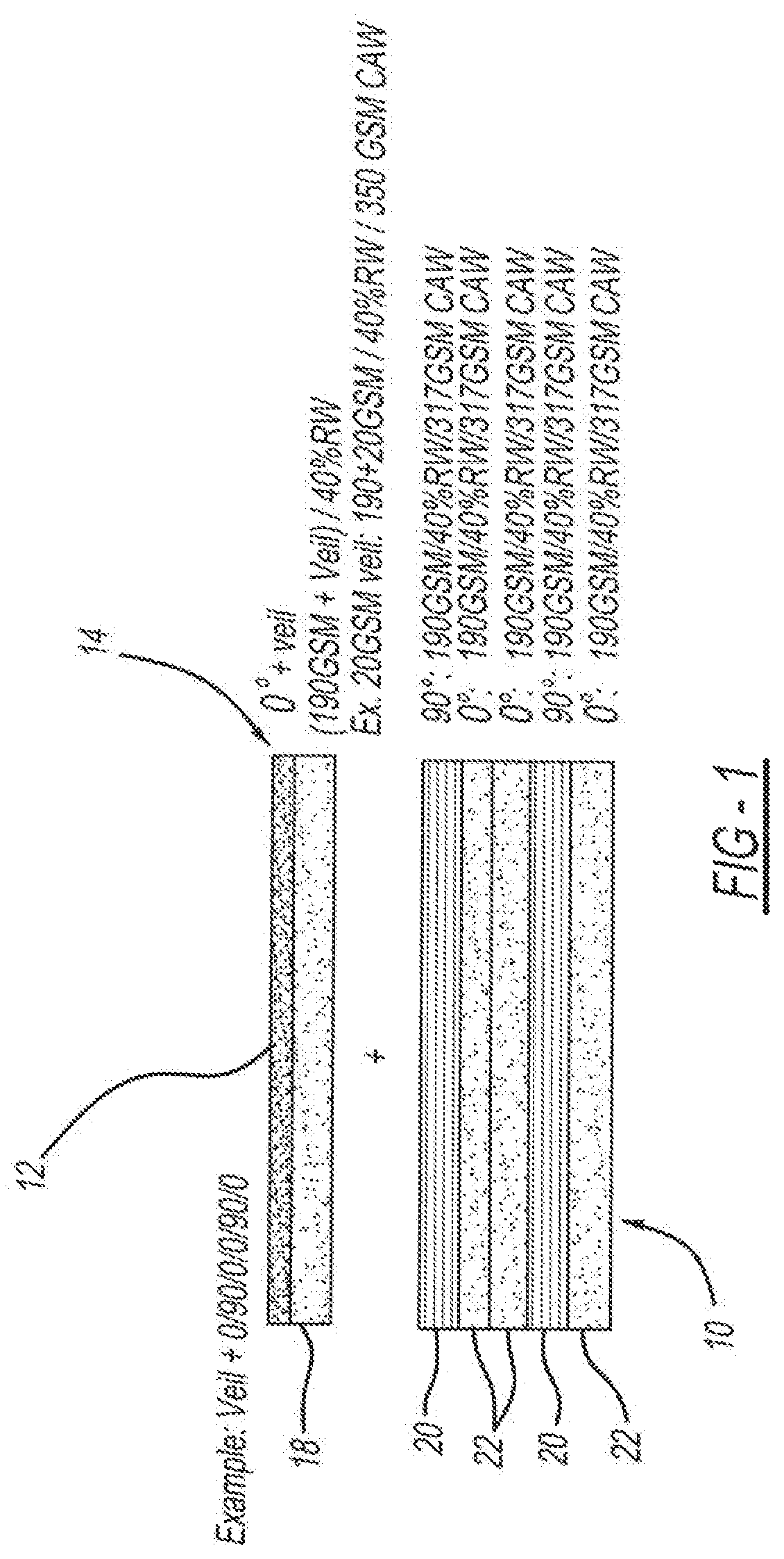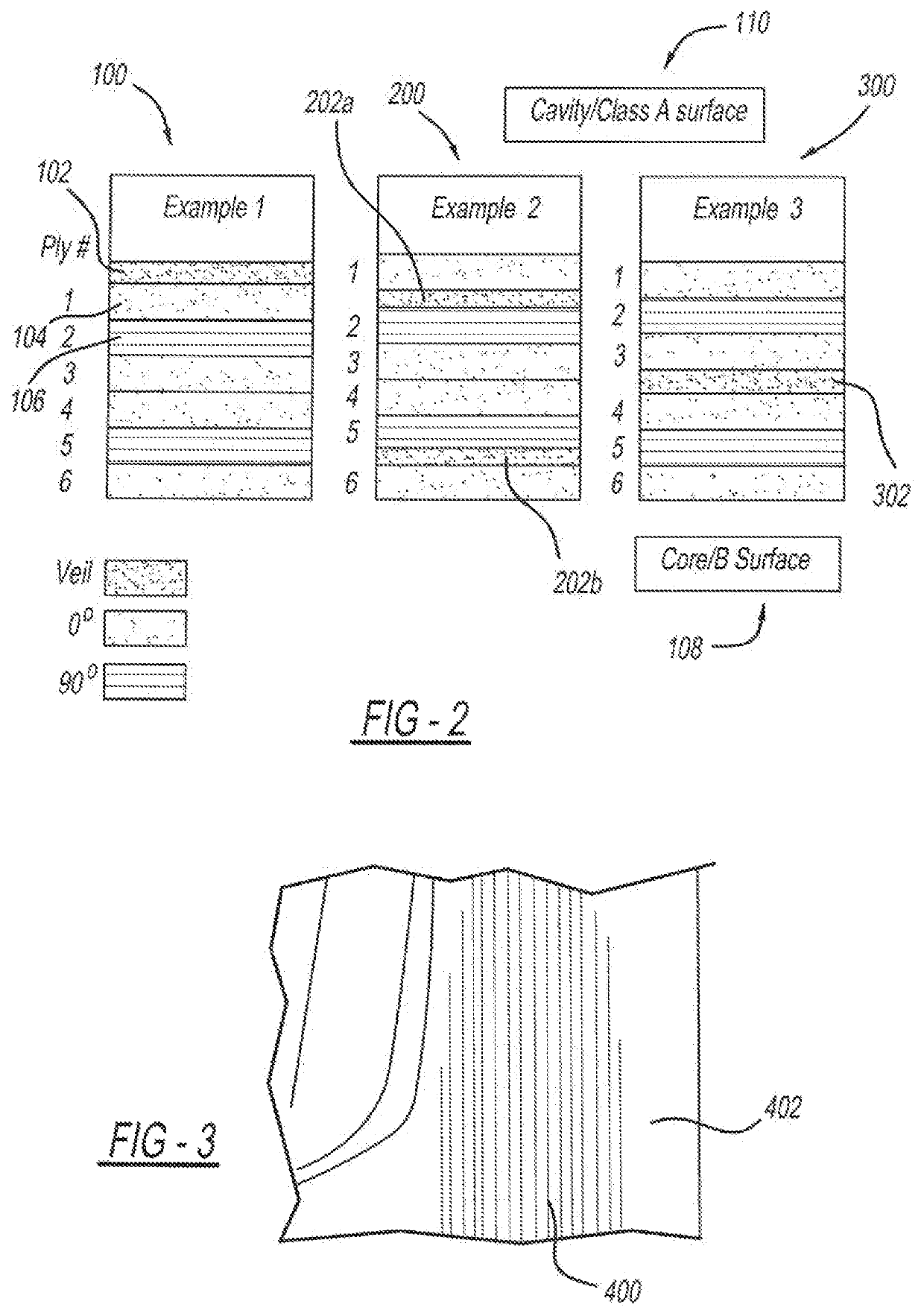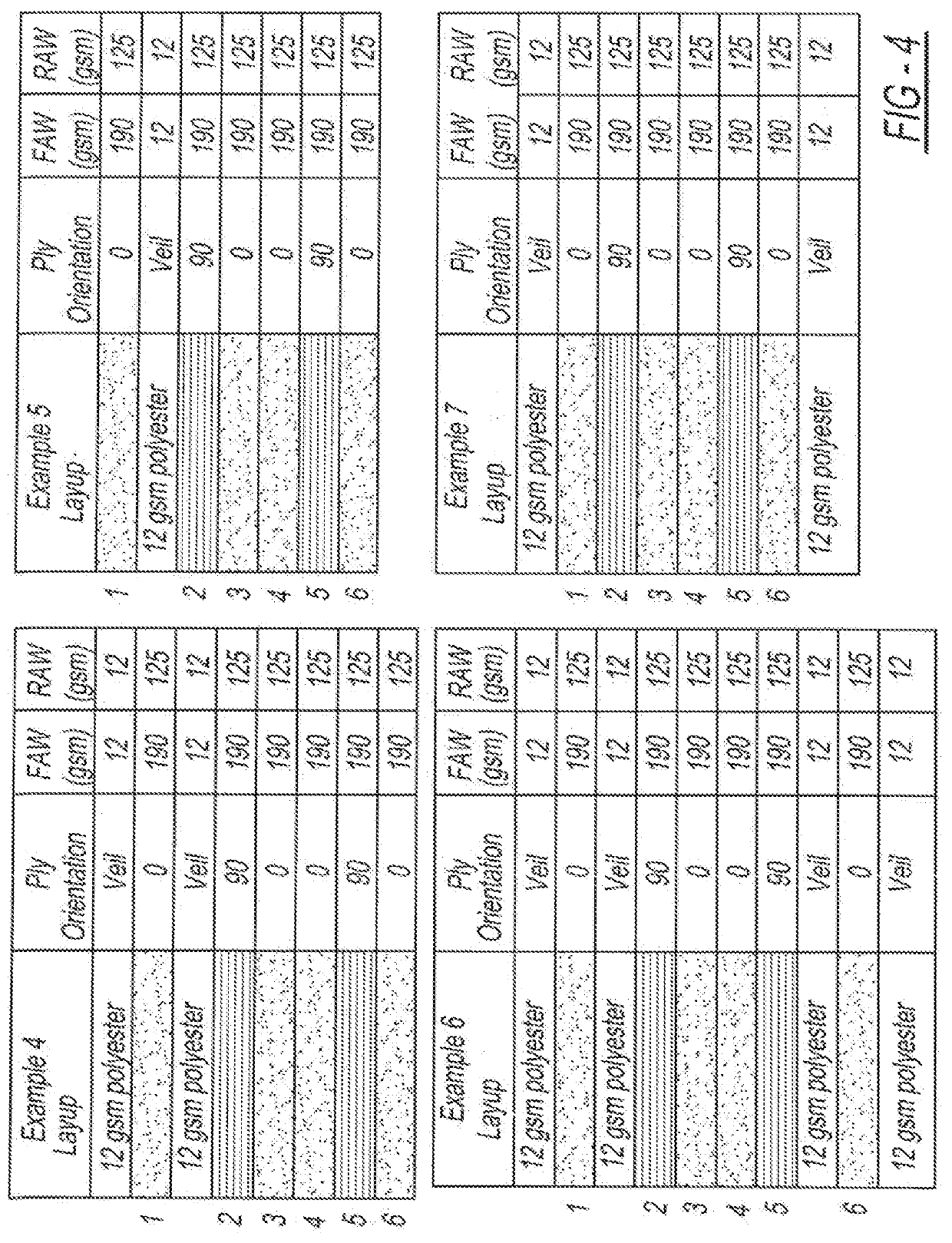Impregnated veils
a technology of impregnated veils and veils, which is applied in the field of veils, can solve the problems of carbon fiber post-mold reworking, high cost of surface preparation and rework, and add to the cost prohibitive nature of automotive molded parts, so as to reduce fiber splitting and improve visual quality.
- Summary
- Abstract
- Description
- Claims
- Application Information
AI Technical Summary
Benefits of technology
Problems solved by technology
Method used
Image
Examples
Embodiment Construction
[0016]The following description of the preferred embodiment(s) is merely exemplary in nature and is in no way intended to limit the invention, its application, or uses.
[0017]Referring to the Figures generally, the present invention is directed to veils incorporated into pre-impregnated carbon fiber for compression molding processing. At least one veil is positional in any predetermined location of the ply stack layup configuration suitable for providing the desired surface quality and any other desired predetermined properties.
[0018]In general, impregnated veils for use in compression molding processing of pre-impregnated carbon fiber pre-impregnated continuous and / or discontinuous thermoset and thermoplastic materials is provided, according to the present invention. These veils are incorporated within the process, e.g., most preferably in the filming or laminating stages, of the pre-pregging (either hotmelt or solvent based processes) in a resin chosen from variety of resins, e.g.,...
PUM
| Property | Measurement | Unit |
|---|---|---|
| temperature | aaaaa | aaaaa |
| clamp force | aaaaa | aaaaa |
| thickness | aaaaa | aaaaa |
Abstract
Description
Claims
Application Information
 Login to View More
Login to View More - R&D
- Intellectual Property
- Life Sciences
- Materials
- Tech Scout
- Unparalleled Data Quality
- Higher Quality Content
- 60% Fewer Hallucinations
Browse by: Latest US Patents, China's latest patents, Technical Efficacy Thesaurus, Application Domain, Technology Topic, Popular Technical Reports.
© 2025 PatSnap. All rights reserved.Legal|Privacy policy|Modern Slavery Act Transparency Statement|Sitemap|About US| Contact US: help@patsnap.com



